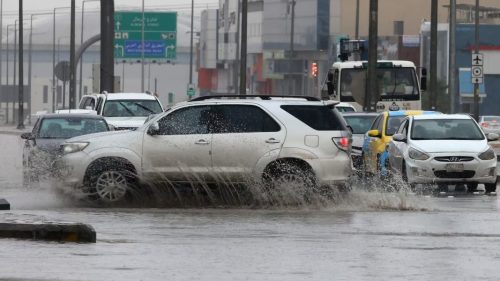Flooding around the world is likely to increase significantly in decades ahead if countries fail to meet official pledges to cut carbon emissions, new research shows.
The latest study led by researchers from the University of Bristol and water risk intelligence firm Fathom looked at forecasts for different types of flooding in various climate change scenarios.
High climate sensitivity and broken promises to reduce carbon emissions could allow the extent of flooding to increase by about half between 2020 and around 2100.
“This research represents the culmination of years of research on our quest to help future-proof communities from the evolving risk of flooding,” lead author Dr Oliver Wing, honorary research fellow at the University of Bristol Cabot Institute for the Environment and chief research officer at Fathom, said.
“The findings underscore the vital importance of all countries keeping their promise to cut carbon emissions.”
Deadly flash floods sweep through northern Afghanistan – in pictures

In the best-case lower emissions scenario, where all carbon pledges are fulfilled, the average flood hazard level is forecast to rise by 9 per cent between 2020 and 2100.
The more pessimistic prospect of higher carbon emissions showed flooding could increase 49 per cent by the end of the century.
In the next few decades, the projected increases in flood hazard were more modest.
Between 2020 and 2050, in a low carbon emissions scenario flood risk is anticipated to grow 7 per cent with this doubling to more than 15 per cent in a high carbon emissions model.
“It is important to note that these global averages result from predicted changes in hazard that have large geographical variations,” Dr Wing said.
“Some places will see their flood risk fall, while for others the increases will be many times larger than the global average even under a lower emissions scenario.”
Researchers found that coastal flooding remains a big problem regardless of whether all carbon emissions are met or not.
Even in a low emissions scenario, coastal flooding is forecast to almost double, increasing by 99 per cent by 2100, because of the lagged response of ocean sea level rise to warming.
Flooding caused by rainfall was found to be especially vulnerable to human-induced climate change. Whereas this type of flooding was shown to increase by 6 per cent by 2100 in a low emissions scenario, this increase grows to 44 per cent in a high emissions model.
Heavy rain causes floods in Riyadh – in pictures

The largest future increases in flooding are forecast to be around the world’s coastlines and in tropical Africa and Asia, as well as significant changes to arid North Africa.
The likelihood of flood increases was most pronounced along the North Atlantic and Indian Ocean coasts, as well as for south-eastern Asia and the Pacific Islands.
“Undertaking this research project involved subjecting our findings to the most comprehensive benchmarking of global flood modelling yet published,” co-author Professor Paul Bates CBE, professor of hydrology at the University of Bristol Cabot Institute for the Environment and chairman and co-founder of Fathom, said.
“With the highest resolution results produced to date, we hope industries will derive value from our model for a range of additional use cases, such as protecting critical infrastructure from future flooding, helping insurers price premiums and meeting the requirements of climate regulations.”
Countries signed up to pledges to lower carbon emissions at Cop27 and the study found that if these are not all achieved on time and in full, flooding levels look set to increase.



